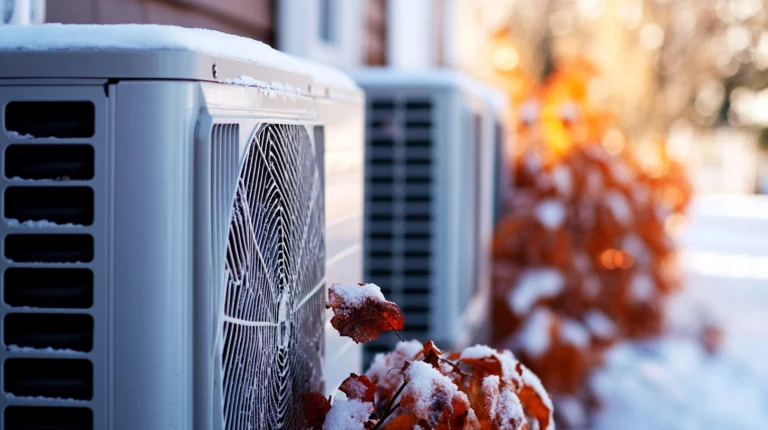As temperatures start to rise, many homeowners prepare to turn on the aircon for the first time after winter. However, before starting the unit, it’s important to follow a few crucial steps to ensure it runs smoothly and efficiently. Consulting an HVAC contractor for a pre-season checkup can also help identify potential issues early and keep your system in peak condition.
Taking the time to inspect, clean, and test your system can help prevent breakdowns, improve performance, and extend the lifespan of your air conditioner. Here’s a comprehensive guide on what to do before turning on AC after winter.
Inspect the Outdoor Unit
During winter, your outdoor AC unit may have been exposed to harsh weather conditions, accumulating debris, dirt, and even small animals seeking shelter. Before starting the unit, inspect it thoroughly by clearing away leaves, twigs, dirt, and any other debris that may have collected around it.
Check for visible signs of wear or damage, such as bent fins, cracks, or rust, and ensure there is at least two feet of clearance around the unit for optimal airflow.
Change or Clean the Air Filter
One of the most important steps when turning on AC for first time after winter is checking the air filter. A clogged or dirty filter can reduce efficiency, restrict airflow, and even cause system failure. If your system uses disposable filters, replace them with a new one, ensuring optimal air quality.
If you have a reusable filter, clean it thoroughly according to the manufacturer’s instructions to maintain peak performance.
Inspect the Thermostat
Your thermostat controls the temperature and efficiency of your AC system. Before turning on AC for first time after winter, check the batteries and replace them if needed. Ensure the thermostat is set to cooling mode and not left on heat or fan mode from the winter.
To confirm it’s working properly, test the system by setting the temperature a few degrees lower than the room temperature and verifying that it kicks on.
Check the Ductwork and Vents
Over the winter, dust, dirt, and even pests can accumulate inside your ductwork, affecting airflow and efficiency. Before starting the unit, inspect the ducts for visible damage, leaks, or disconnected sections.
Vacuum and clean supply and return vents to ensure unrestricted airflow, and make sure that furniture or curtains are not blocking any vents.
Inspect the Refrigerant Lines
Your air conditioner relies on refrigerant to cool your home, and low refrigerant levels or leaks can reduce efficiency and cause damage to the compressor. Before starting your AC, check for visible signs of leaks, such as oily residue around the refrigerant lines.
If you suspect a leak or notice a drop in cooling performance, it’s best to contact an HVAC professional to inspect and resolve the issue.
Examine Electrical Connections and Components
Winter conditions can cause wear on electrical components, so before turning on AC for the first time after winter, inspect the wiring for signs of fraying or damage and ensure all electrical connections are secure.
Additionally, test the circuit breaker to confirm that the AC unit has power. If you notice any damaged wires or electrical issues, call an HVAC technician to avoid potential hazards.
Clean the Evaporator and Condenser Coils
Dirty coils can significantly impact your air conditioner’s performance. Before starting the unit, clean both the evaporator (indoor) and condenser (outdoor) coils by using a soft brush or vacuum cleaner to remove dust and debris. For deeper cleaning, apply a coil cleaner spray specifically designed for HVAC systems to ensure optimal efficiency.
Check the Drainage System
Your AC system has a condensate drain line that removes excess moisture, but a clogged drain can lead to water damage and mold growth. Before starting your AC, locate the drain line and check for any blockages.
To prevent buildup, flush it with a mixture of water and vinegar. Additionally, ensure the drain pan is clean and free of standing water to maintain proper drainage.
Perform a Test Run
After completing all the necessary inspections and maintenance steps, it’s time to turn on the aircon for a test run. Follow these steps:
- Set your thermostat to cooling mode and lower the temperature.
- Listen for any unusual noises, such as grinding or rattling.
- Check if cool air is coming from the vents.
- Monitor the system for 15-30 minutes to ensure it operates smoothly.
If you notice any issues, such as warm air blowing, weak airflow, or strange smells, turn off the unit and contact an HVAC technician.
Schedule Professional Maintenance
Even if everything appears to be in working order, scheduling an annual professional HVAC inspection is a good idea.
A trained technician can perform a thorough system check, identify potential problems before they become costly repairs, and optimize efficiency to ensure your AC is ready for the summer.
AC Startup FAQ
When to Turn on AC in Spring?
Many homeowners wonder when the best time is to turn on AC in spring. The ideal time depends on your location and personal comfort preferences. Once daytime temperatures consistently reach 70°F or higher, it’s a good time to test your AC.
Additionally, high humidity can make even mild temperatures feel uncomfortable, so if humidity becomes an issue, consider turning on your AC sooner. Don’t wait until the first hot day of the year to test your AC—running a test in early spring ensures you have time to address any issues before peak cooling season.
What Temperature Should I Set My Air Conditioner in Spring?
Finding the ideal temperature setting for your air conditioner in spring depends on your comfort level and energy efficiency goals. A good starting point is to set your thermostat between 72°F and 75°F for a balance of comfort and energy savings.
Raising the thermostat by a few degrees when you’re not home can help lower energy costs without compromising efficiency. Additionally, if humidity levels are high, using a dehumidifier in combination with your AC can improve comfort without requiring a significant temperature reduction.
Get Your AC Ready for Summer
First time turning on AC after winter requires more than just flipping a switch. By following these essential steps before starting the unit, you can ensure your air conditioner runs efficiently, avoids costly repairs, and keeps your home comfortable throughout the warmer months.
Whether it’s inspecting the outdoor unit, replacing air filters, checking refrigerant levels, or scheduling professional maintenance, these proactive measures will help your AC system stay in top condition all summer long.

